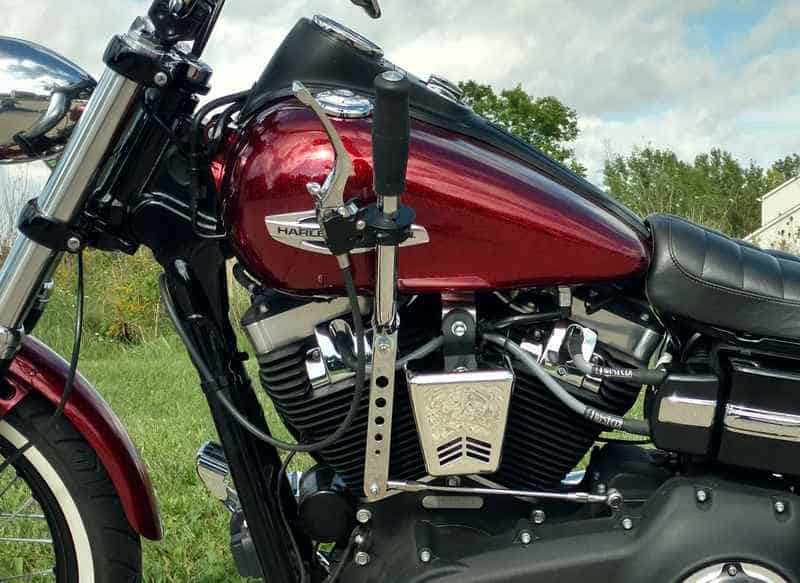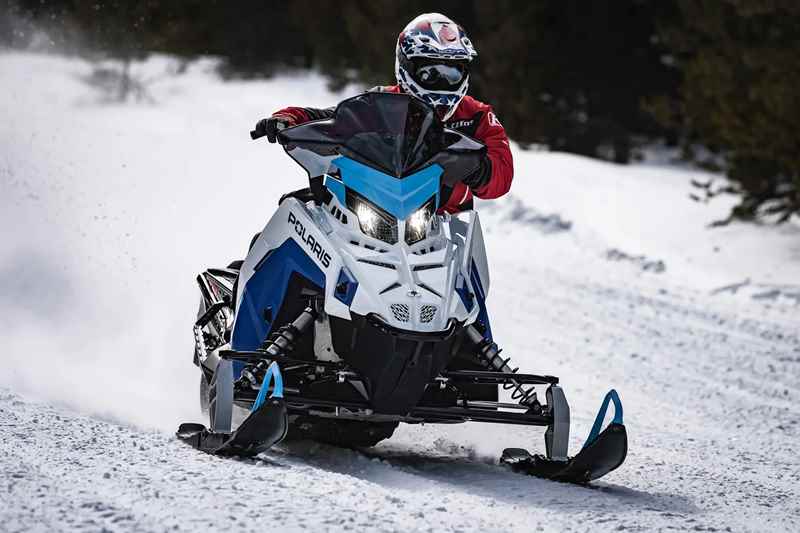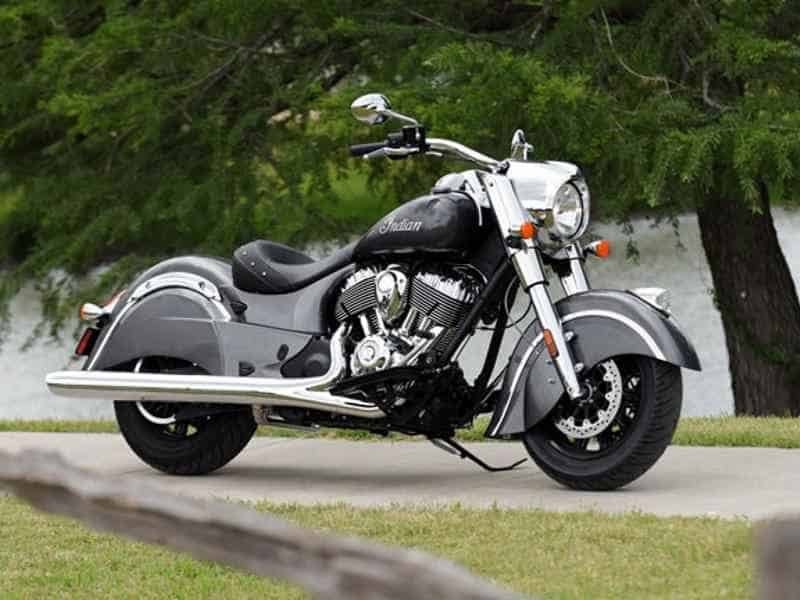Table of Contents
Introduction to Motorcycle Suicide Shifters
Motorcycles captivate with their freedom and speed, but it’s the unique details like a suicide shifter on a motorcycle that truly turn heads. What exactly are these intriguing components? Let’s delve into the world of suicide shifters, revealing their definition and the historical backdrop against which they rev as an integral part of bike culture.
Definition Their Historical Context in Motorcycle Culture
Suicide shifters, also known as jockey shifters, stand out as a distinctive feature on some motorcycles. They are manual shifting devices that forgo the common foot-operated gear selector for one that is hand-operated and typically mounted directly on the side of the fuel tank or on the gearbox. The term “suicide” comes from the increased difficulty and risk associated with using these shifters, especially during the early days of motorcycling when roads were less predictable and riding techniques were not as advanced.
The historical context of jockey shifters is as rich as it is fascinating. Originating in the early 1900s, these shifters were standard on motorcycles before the introduction of foot-operated gears. They are a nod to the era of classic motorbikes, evoking a sense of nostalgia and rebellion within the motorcycle community. Over the years, while modern bikes have mostly adopted the safer, more convenient foot shifting systems, jockey shifters have remained a symbol of old-school cool among enthusiasts who value tradition and mechanical simplicity.
Mechanics of Jockey Shifters and Differences from Traditional Shifting Mechanisms
In contrast to the modern day foot-operated shifters, jockey shifters offer a very different user experience. Traditional motorcycle shifting involves the rider using their left foot to press down or lift up a lever in coordination with the clutch to select the appropriate gear. This system is intuitive and allows riders to keep both hands firmly on the handlebars, contributing to stability and control.
With jockey shifters, however, the rider uses their left hand to change gears, often requiring them to remove one hand from the handlebar to operate the shifter. This can be tricky, as it potentially reduces control over the motorcycle during shifts. Moreover, coordinating the hand-operated clutch, typically located on the left side of the handlebar, with the shifter adds an additional layer of complexity. Riders need to develop a refined sense of timing and skill to operate this system effectively, making jockey shifters a true testament to a rider’s ability and passion for the classic ways of motorcycling.
The mechanics of these shifters may seem archaic compared to the smoothness of contemporary gearboxes, but they offer an undeniably pure interaction between machine and rider. It’s a mechanical ballet, where precision and finesse result in the sweet symphony of a perfectly executed shift. For those who choose this path, it’s about embracing the challenge and enjoying every aspect of the ride, even if it demands more attention and care.
Understanding how motorcycle jockey shifters work sets the stage for appreciating their role in motorcycle culture and their impact on the riding experience. As we explore further topics such as their components, challenges, and cultural significance, we will continue to see how these fascinating mechanisms stitch together the fabric of motorcycling history and ethos.

The Mechanics of a Suicide Shifter on a Motorcycle
Peeling back the layers of motorcycle jockey shifters reveals a surprisingly intricate world. At its core, this system is a throwback to the days when motorcycling was as much about feel as it was about function. So what goes into this seemingly simple mechanism? Let’s take a closer look.
Detailed Breakdown of Components
Imagine reaching down to your motorcycle’s side and feeling the cold metal of a lever—that’s the jockey shifter in action. To engage it, you’d typically need to let go of the handlebars with your left hand, an action quite different from today’s common thumb or foot-activated gear shifts. The hand clutch, which disengages and engages the transmission, requires a similar manual effort. It’s all about coordination and timing.
Some systems pair the jockey shifter with a foot clutch pedal. This setup frees up the rider’s hands but still differs from modern shifting mechanisms that integrate the clutch and gear shift operations near the foot or hand for convenience and safety. The foot clutch pedal is often on the floorboard that you press to disengage the transmission before shifting. With these components, riders interact directly with the mechanics of their bike, creating a visceral riding experience that many find appealing.
Unique Challenges and Considerations
Riders of motorcycles equipped with jockey shifters face distinctive challenges. The most obvious is the need to remove one hand from the handlebars to shift gears, which can affect balance and control, especially at lower speeds or during tight maneuvers. Additionally, the coordination required between hand clutch and foot clutch pedal operation demands a higher level of skill and attention, which could be taxing for new riders or those accustomed to more modern setups.
Another consideration is the mental load of managing the machine. While contemporary riders might rely on muscle memory to operate integrated gear levers and clutches, jockey shifter users must be constantly aware of their gear position and clutch engagement. This means being more attuned to the bike’s operations—a requirement that can either be seen as a thrilling challenge or a potential hazard, depending on the rider’s perspective and experience.
In practice, using a jockey shifter involves a distinct rhythm: squeeze the clutch pedal, reach for the shifter, select your gear, ease out the clutch, and return your hand to the bars. It’s a dance of sorts, one that requires practice to master and confidence to perform smoothly. The lack of a quick-shifting capability also means riders must plan their gear changes well in advance of situations like overtaking or navigating traffic.
While these challenges may seem daunting, they are part of the appeal for some riders—the extra effort and skill involved can create a sense of accomplishment and a deeper connection with their machine. After all, mastering a motorcycle jockey shifter is not just about getting from point A to B; it’s about the journey and the experience.
In closing, understanding the mechanics of motorcycle jockey shifters offers insight into a unique aspect of motorcycling history and culture. It’s a system that demands respect and careful handling, and for those who choose it, provides a unique and rewarding riding experience. Riders considering this setup should weigh the pros and cons carefully, ensuring they are prepared for the challenges it presents.

Advantages and Challenges of Jockey Shifters
Customization Options and Aesthetic Appeal
For those in the motorcycle community, personalizing their bike is a way of expressing individuality, and jockey shifters offer a unique opportunity for customization. The design of jockey shifters can be as simple or as elaborate as the rider desires, with options ranging from vintage knobs to custom-crafted levers that reflect their personal style. Beyond just being a functional part of the motorcycle, these shifters often serve as a statement piece, adding to the bike’s aesthetic appeal.
The allure goes beyond looks; there’s an artistry involved in integrating a jockey shifter into the motorcycle’s overall design. They can complement other custom elements on the bike, like a hand-tooled leather seat or custom paint job. This level of customization can turn a standard bike into a one-of-a-kind work of art, and for many riders, the appeal of creating something truly personal is priceless.
Safety Concerns and Operational Difficulties
While jockey shifters may add character to a motorcycle, they also introduce safety concerns and operational challenges. One major concern is the necessity to take a hand off the handlebars to change gears, which can compromise control and stability. Especially at high speeds or during tight maneuvers, this can significantly increase the risk of accidents. Additionally, because jockey shifters require manual operation, they can be more demanding on the rider’s attention and coordination, leaving less room for error.
Rider experience is also impacted when it comes to performance. Traditional shifting mechanisms are designed for efficiency and quick response, but the mechanical nature of jockey shifters means they often lack the smoothness offered by modern systems. This can result in jerky gear changes and a less predictable riding experience. As such, riders need to be acutely aware of their gear position and clutch engagement at all times, adding to the mental load during a ride.
Impact on Rider Experience and Performance
The operational difficulties of jockey shifters can have a profound impact on rider experience. Learning to use them is not just about mastering a new skill; it’s about rethinking how to interact with the motorcycle. For some, this learning curve is a welcomed challenge that, once overcome, results in a gratifying sense of achievement. However, for others, the added complexity can detract from the joy of riding.
Performance-wise, jockey shifters can affect the bike’s responsiveness. This might not be an issue for leisurely rides, but in situations that call for quick shifts, such as racing or aggressive street riding, jockey shifters may not be practical. It’s important for riders to consider how the choice of shifter system aligns with their riding style and the environments in which they typically ride.
In sum, while jockey shifters can provide a way for riders to customize their motorcycles and stand out aesthetically, they come with significant safety concerns and operational difficulties that can impact rider experience and bike performance. Riders must weigh these factors carefully against the benefits of customization and the unique look that jockey shifters provide. Ultimately, it’s a deeply personal choice that should be made with both eyes open to the potential risks and rewards.

Understanding the Appeal of Jockey Shifters in Motorcycle Culture
Motorcycles are not just a means of transportation; they are symbols of freedom, rebellion, and individuality. Within this realm, jockey shifters have carved out their own niche, steeped in historical significance and cultural mystique. But why do these unique mechanisms capture the imagination of riders around the world? Let’s delve into the historical roots and cultural significance to understand the enduring appeal of jockey shifters within the motorcycle community.
The Historical Roots of Jockey Shifters
Imagine a time when motorcycles were as raw as the roaring engines that powered them, a time when shifting gears was an art performed by hand. This is the era from which jockey shifters emerged—a mechanical solution born out of necessity and ingenuity. Originally, all motorcycles were equipped with hand-operated shifters, often without the safety features we take for granted today. This was during the infancy of motorcycle engineering, long before modern ergonomics and electronic aids.
The term “jockey shifter” itself is a nod to the increased difficulty and risk associated with its use. Riders had to remove a hand from the handlebars to change gears, a maneuver that demanded skill and focus, especially during turns or when navigating through traffic. Despite these challenges, or perhaps because of them, jockey shifters became emblematic of the biker’s ability to master and control their machine under any circumstance.
Emotional Resonance with Riders
There’s a thrill that comes with mastering a jockey shifter, a feeling akin to taming a wild beast. For certain riders, the use of a jockey shifter is more than just a quirky hardware choice—it’s an emotional journey, a way to connect with the heart of motorcycling. Stripping down the experience to its mechanical roots, these riders find joy in the tactile sensation of metal under hand and the deliberate, dance-like motion required to shift gears.
This raw, hands-on approach provides a sense of authenticity and nostalgia, evoking the spirit of early bikers who rode the open roads with little more than their wits and will. It’s a deliberate step away from the increasingly digital and automated world, an act of preserving a piece of motorcycle heritage that speaks volumes about the rider’s values and riding philosophy.
The Legacy of Motorcycle Jockey Shifters at the Sturgis Motorcycle Rally
Motorcycle jockey shifters have a unique place in the culture and history of the Sturgis Rally, an iconic motorcycle rally held annually in Sturgis, South Dakota. Enthusiasts and riders often gather at this legendary event to celebrate their love for motorcycles and the open road. The rally, deeply rooted in the history of the Sturgis community, has seen the evolution of motorcycle accessories like jockey shifters.
These unconventional shifters replace the traditional foot-operated gear shifter with a hand-operated lever, offering riders a distinctive and rebellious way to navigate their bikes.The Sturgis Rally blog often features stories about the past Sturgis Rally and these modifications, showcasing the individuality and creativity of participants. As riders proudly exhibit their motorcycles at the rally events, the jockey shifter becomes not only a functional modification but also a symbol of the unique spirit that defines the Sturgis Rally.
With the history of the Sturgis Rally deeply intertwined with bike culture, Black Hills riders photos and Sturgis rally photos captured during the event contribute to the rich tapestry of this motorcycle gathering. Looking towards a future Sturgis Rally, the jockey shifter remains a captivating element, reminding enthusiasts that the Sturgis Motorcycle Rally is not just an event but a timeless celebration of freedom, camaraderie, and the enduring spirit of motorcycle culture. Check out the rally blog for more information!
Safety and Ethical Considerations in the Use of Jockey Shifters
When it comes to motorcycle jockey shifters, safety isn’t just a consideration—it’s an imperative. But what are the ethical implications of using such a system that inherently carries more risk? Let’s delve into this topic, examining how the integration of these shifters on bikes intersects with the broader conversation around safety and risk management.
Evaluation of the Ethical Implications Surrounding the Use of Jockey Shifters
At first glance, the term “jockey shifter” may strike a chord of alarm. The name itself seems to suggest a certain perilous nature. Ethically speaking, the use of such a mechanism poses questions about the balance between personal freedom and collective responsibility. Riders cherish the autonomy and thrill that come with operating a motorcycle, but this must be weighed against potential hazards to themselves and others on the road. Is it responsible to use a system that requires more attention and dexterity, thereby increasing the chances of distraction or error?
The answer isn’t black and white and often boils down to the individual’s skill level and commitment to mastering the operation of a jockey shifter. Those who choose to use them must recognize the higher stakes involved and take responsibility for the increased risks—not only for their own safety but for the well-being of fellow motorists.
Examination of Best Practices for Riders Utilizing Jockey Shifters
For riders who opt for jockey shifters, there are best practices to follow to ensure responsible usage and safe riding habits. First and foremost, extensive practice is crucial. Before hitting the open road, one should spend ample time becoming intimately familiar with the shifting mechanics, ideally in a controlled environment like an empty parking lot or a closed course.
- Regular Maintenance: Maintain your bike meticulously. A well-oiled machine is fundamental for smooth shifting and overall safety.
- Mental Preparedness: Stay alert. Operating a jockey shifter requires constant vigilance and mental presence to manage the unique controls.
- Physical Familiarity: Develop muscle memory. The more second-nature the shifting process becomes, the less it will distract from other riding demands.
- Defensive Riding: Anticipate the actions of others. Being able to react quickly to unexpected situations is key, especially when your shifting mechanism takes extra focus.
Moreover, it’s important to acknowledge that jockey shifters are not suited for every rider. Those with physical limitations, or who are new to motorcycling, may find these systems overly challenging, potentially leading to dangerous situations. It’s a personal decision that should be made with a realistic assessment of one’s abilities and limitations.
In addition to individual preparedness, it’s also worth noting the role of manufacturers and custom bike builders in ensuring that their designs do not compromise safety. While customization is a cornerstone of motorcycle culture, designers must navigate the thin line between innovation and safety, ensuring that any modifications meet stringent standards.
Finally, staying informed about local laws and regulations is paramount. Some jurisdictions might have specific rules regarding the use of jockey shifters, and being compliant is not only a legal obligation but a moral one as well. It ensures that one’s pursuit of a unique riding experience does not come at the cost of legality and public safety.
Responsibly enjoying the distinctive experience that jockey shifters provide means embracing these best practices as part of the riding ethos. By doing so, riders not only protect themselves but also contribute to a culture of safety that benefits the entire motorcycle community.
Conclusion and Recommendations
We’ve revved through the mechanics and cultural tapestry that motorcycle jockey shifters add to the biking world. Now let’s gear down and summarize the key insights we’ve gleaned before rolling out some tailored advice for those tempted by the distinctive allure of jockey shifters.
Key Insights into Jockey Shifters
At the heart of our exploration, we uncovered that jockey shifters offer a unique blend of history and personal expression. They hark back to the early days of motorcycling but continue to captivate modern riders with their raw, mechanical charm. Understanding these shifters isn’t just about grappling with their components—hand clutches, foot-operated pedals, and jockey shifters—but also about appreciating their place in motorcycle lore.
The challenge they present isn’t trivial; adopting a jockey shifter requires a calculated leap from the standard shifting mechanisms most riders are accustomed to. This leap isn’t merely physical—it’s an emotional commitment to a style that demands attention, respect, and skill.
Recommendations for Aspiring Shifter Enthusiasts
If you’re considering making the switch to a jockey shifter, it’s essential to approach this transition with due diligence. Begin by ensuring your choice is informed by both aesthetic and practical considerations. Are you prepared for the extra focus it demands? Will you dedicate time to practice in a safe environment? These are critical questions to ponder.
- Practice Makes Perfect: Before hitting the open road, invest ample time in getting acquainted with the new setup. Find a safe, traffic-free area to grow comfortable with the nuances of hand-clutching and foot-shifting.
- Maintenance Matters: Jockey shifters require regular upkeep to function safely. Make maintenance checks a part of your routine to ensure longevity and reliability.
- Stay Informed: Keep abreast of the local laws and regulations concerning motorcycle modifications like jockey shifters to avoid any legal pitfalls.
- Safety First: Even if you’re drawn to the thrill of a jockey shifter, never compromise on safety gear. Helmets, gloves, and appropriate attire are non-negotiable.
Beyond these, consider joining a community of like-minded enthusiasts. Here, you can share experiences, tips, and perhaps even find mentorship. Remember, the journey to mastering a jockey shifter is as much about community as it is about individual skill.
Continuing the Customization Journey
Motorcycle customization is a canvas for personal expression. While jockey shifters are a distinctive stroke on that canvas, they’re just one element in the vast palette of customization options available to riders. Dive into forums, attend workshops, and visit custom bike shows to inspire your next project.
Whether it’s fine-tuning your ride’s performance or adding that eye-catching aesthetic detail, each modification tells a story. Allow your curiosity to lead you through the rich culture of motorcycle customization, and let your bike be a testament to your passion for riding.
In final reflection, our throttle twist through the world of jockey shifters reminds us of the vibrant interplay between innovation, tradition, and personal identity that motorcycles embody. The road beckons—with every turn of the wheel and shift of the gears, may your ride be as exhilarating as it is expressive.
Follow my blog with Bloglovin















